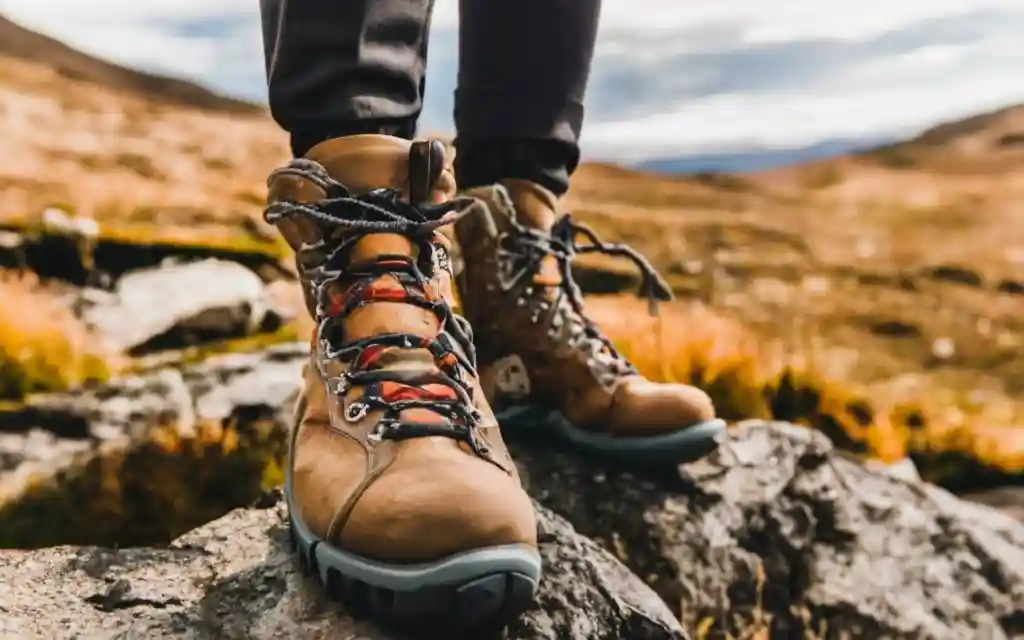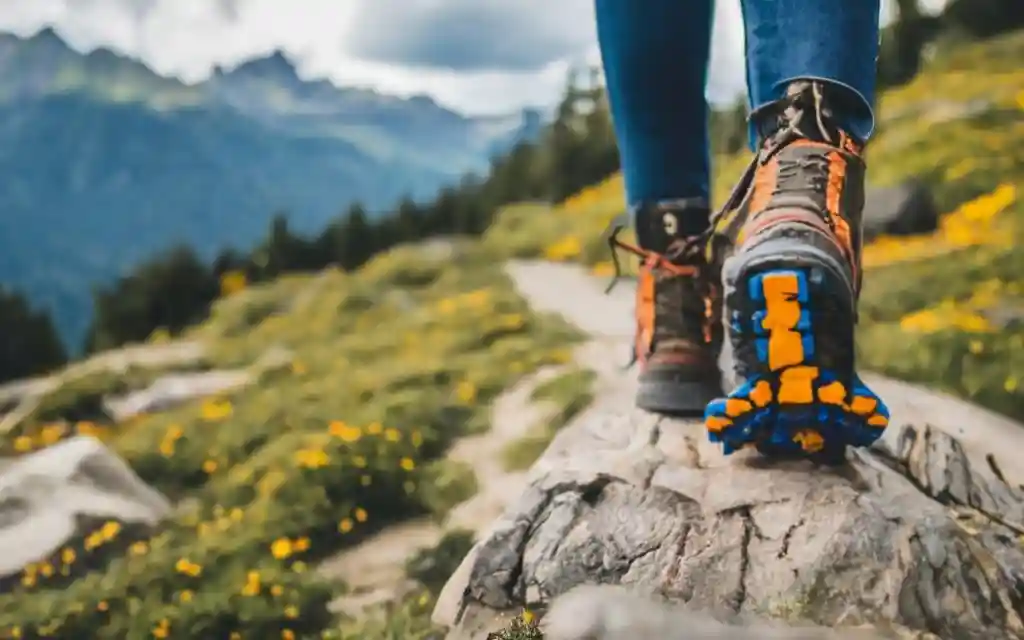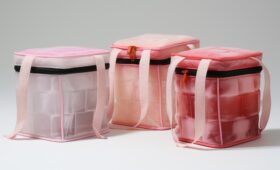Mastering Hiking Boot Care: Tips for Long-Lasting Comfort

Hiking is a pursuit that often takes us through challenging terrains and breathtaking vistas. However, one of the most critical aspects of a successful hiking experience is often the one we overlook – our trusty hiking boots. These boots are not just footwear; they’re the foundation of our adventures, providing stability, support, and protection on the trails. As hiking enthusiasts, we must recognize the pivotal role that well-maintained hiking boots play in ensuring both our comfort and safety during outdoor journeys.
In this comprehensive guide, we’ll delve into the art of hiking boot maintenance. We’ll explore the crucial techniques and strategies to keep your hiking boots fresh, clean, and ever-ready for your next trek. After all, a well-cared-for pair of boots can be the difference between a memorable adventure and a painful misadventure.
We understand that every hiker’s journey is unique, and the challenges they face vary. Whether you’re a seasoned backpacker or a novice explorer, these tips will help you keep your hiking boots in top condition. We’ll guide you through the basics of cleaning and maintaining your boots, offer solutions for tackling common issues like mud and odors, and share wisdom on storage and drying techniques.
By learning the art of hiking boot care and implementing the tips and tricks discussed here, you’re not only ensuring the longevity of your hiking boots but also guaranteeing that they remain fresh, comfortable, and reliable for many more adventures to come. So, let’s lace up, grab our cleaning kits, and embark on this journey to discover how to keep your hiking boots fresh, clean, and always ready for the next trail.
The Basics of Hiking Boot Care
Hiking boots are complex, multi-component pieces of gear, and understanding each part’s role is fundamental to proper maintenance. Let’s break down the key components and explore why caring for them is crucial.
Components of Hiking Boots
- Outsole: The rubber bottom that contacts the ground, providing traction.
- Midsole: The layer above the outsole that offers cushioning and support.
- Insole: The removable inner sole that can often be replaced for comfort.
- Upper: The top part of the boot that covers your foot and contains the laces.
- Laces: Used to secure the boot and ensure a snug fit.
- Tongue: The flap beneath the laces that keeps debris out.
- Toe Cap: Reinforced material protecting your toes from impacts.
- Heel Counter: A stiff cup around the heel that maintains shape and stability.
- Collar: The padded top edge where the boot contacts your ankle.
Purpose of Care
- Outsole: Keeping this part clean ensures optimal traction on trails. Remove dirt and small rocks that could hinder grip.
- Midsole: Cleaning the midsole maintains shock absorption and foot support.
- Insole: Clean or replace insoles to enhance comfort and minimize odor.
- Upper: Cleaning and conditioning the upper extends the boot’s life by preventing leather from drying out or cracking.
- Laces: Clean or replace laces to maintain a secure fit.
- Tongue: Ensure it’s free from debris to avoid discomfort or blisters.
- Toe Cap: Check for damage and protect your toes during hikes.
- Heel Counter: Maintain structural integrity and support by keeping this area in good condition.
- Collar: Cleaning the collar keeps the boot comfortable around your ankle.
Boot Longevity
- Hiking boots are a substantial investment, and proper care significantly extends their lifespan.
- Regular cleaning prevents the buildup of dirt, which can lead to the breakdown of materials over time.
- Maintaining boots in top condition ensures that they provide the necessary support and protection on the trail.
- When you commit to basic care, your boots remain comfortable, reliable, and better equipped to handle the challenges of hiking.
Remember, each component plays a vital role in ensuring your boots are up for the demands of the trail. By understanding their significance and taking the time to care for each one, you’re preserving the quality and longevity of your hiking boots.
Regular Cleaning and Maintenance
Cleaning After a Hike
Proper cleaning post-hike is vital for preserving your boots. Here’s a step-by-step guide:
- Remove Laces and Insoles: Start by taking out the laces and insoles. This allows better access to all parts of the boot
- Brush Off Debris: Use a soft-bristle brush or an old toothbrush to gently remove loose dirt and debris. Pay special attention to the outsoles and crevices.
- Wipe Down: Dampen a cloth or sponge and wipe down the entire boot. Avoid using excessive water; you don’t want to saturate the leather or fabric. If your boots are especially muddy, you can rinse them under a gentle stream of water to remove the bulk of the dirt.
- Scrub the Outsoles: Clean the outsoles thoroughly. A stiffer brush or a boot-specific brush with tougher bristles can be useful here.
- Check for Damage: While cleaning, inspect your boots for any signs of damage, like cuts or worn-down soles. Address any minor issues before they become significant problems
- Allow to Dry: Let your boots air dry naturally, away from direct heat sources. Stuffing them with newspaper helps absorb moisture and maintain their shape.
Recommended Frequency
The frequency of cleaning and maintenance depends on the intensity and conditions of your hikes. However, here are some general guidelines:
- After Every Hike: Lightly clean and inspect your boots after every hike to prevent dirt buildup.
- Monthly: For regular hikers, a more thorough cleaning and inspection can be done monthly.
- Seasonally: At the end of a hiking season, give your boots a comprehensive cleaning, reproofing, and check for any required repairs.
Cleaning Tools and Products
- Soft Bristle Brush: Use this to remove loose dirt.
- Clean Water: Dampen a cloth or sponge for wiping down your boots.
- Boot Cleaner or Mild Soap: For a deeper clean, a specialized boot cleaner or mild soap diluted in water can be used. Avoid harsh detergents or chemicals.
- Leather Conditioner: To maintain leather boots, apply a suitable leather conditioner periodically.
- Waterproofing Spray or Wax: Reapply waterproofing treatment as needed. Choose a product that suits your boot’s material.
Proper cleaning and regular maintenance keep your hiking boots in excellent condition and ready for your next adventure. It also helps prevent damage caused by dirt, moisture, and neglect.
Dealing with Special Situations
Addressing Mud and Stains
- Mud: If your boots are caked in mud after a hike, allow them to dry first. Once dry, tap the soles together to remove the dried mud. For remaining stains, use a soft brush or toothbrush with a mixture of mild soap and water.
- Stains: Stains can be tricky, depending on the source. For food or drink stains, gently blot with a clean cloth or sponge and mild soap. For more challenging stains, consult the boot manufacturer’s recommendations.
Handling Odors
- Drying: Keeping your boots dry is essential for odor prevention. After a hike, remove the insoles and let them air out. Stuff the boots with newspaper, which helps absorb moisture and odors.
- Deodorizing Products: There are specialized boot deodorizers available, but you can also use common household items like baking soda. Sprinkle some baking soda inside your boots and let it sit overnight. Shake or brush out the excess before wearing them again.
Dealing with Mold and Mildew
- Prevention: Mold and mildew thrive in damp conditions. To prevent their growth, ensure your boots are thoroughly dry before storing them. Store boots in a cool, dry place.
- Cleaning: If you do find mold or mildew, brush off the spores and then clean the affected area with a mild solution of water and white vinegar or hydrogen peroxide. Dry the boots completely.
Removing Chewing Gum or Tar
- Freezing Method: If you’ve stepped in gum or tar, put your boots in a plastic bag and place them in the freezer for a few hours. Once the substance hardens, you can gently scrape it off with a dull knife.
Addressing Salt Stains

- Vinegar Solution: If your boots have salt stains from winter hikes, a mixture of water and white vinegar can help. Wipe the stains with a cloth dampened in this solution and then wipe with clean water.
Each situation might require a specific approach, but the key is to address it promptly. The more you tackle these issues as they arise, the better you can maintain the integrity and condition of your hiking boots.
Storage and Drying Techniques
Proper Boot Storage
- Location: Choose a cool, dry place to store your hiking boots. Avoid direct sunlight or extreme temperatures, as these can damage materials.
- Position: Store your boots upright to maintain their shape. You can use boot trees or stuff them with newspaper to help them keep their form.
- Ventilation: Ensure proper ventilation in the storage area to prevent moisture buildup.
Importance of Drying
- Preventing Mold: Drying your boots is crucial to prevent mold and mildew growth. These fungi thrive in damp environments.
- Increasing Lifespan: Regularly drying your boots can extend their lifespan. Moisture weakens materials and can lead to delamination or cracking.
- Maintaining Comfort: Wet boots are uncomfortable. Proper drying ensures they are ready for your next adventure.
Drying Wet Boots Safely
- Remove Insoles: After a wet hike, remove the insoles from your boots. This allows both the boots and insoles to dry more quickly and thoroughly.
- Air Drying: Loosen the laces and open the boot as wide as possible without damaging it. Place your boots in a well-ventilated area at room temperature. Do not use artificial heat sources like radiators, ovens, or hairdryers, as excessive heat can damage boot materials.
- Stuff with Newspaper: Stuff the boots with newspaper to help absorb moisture from the inside. Replace the newspaper regularly until it no longer feels damp.
- Dry Inside and Out: For thorough drying, it’s important to address both the exterior and interior of your boots. Pay attention to seams and crevices where moisture can linger.
- Avoid Sunlight: While it’s essential to dry your boots, avoid direct sunlight as it can cause materials to deteriorate or fade.
By following these storage and drying techniques, you can maintain your hiking boots in optimal condition and ensure they are ready for your next adventure.
Extending the Lifespan of Your Hiking Boots
Overall Boot Care Practices
- Regular Cleaning: Regularly clean your hiking boots as mentioned earlier in this guide. Clean boots are less likely to suffer from permanent stains or damage.
- Conditioning: Apply a suitable boot conditioner or waterproofing treatment periodically. This helps keep the leather or synthetic materials supple and water-resistant.
- Inspect for Damage: After every hike, inspect your boots for damage. This includes checking for loose seams, worn-out soles, or damaged eyelets. Address minor issues promptly to prevent them from becoming major problems.
- Re-Lacing: Replace worn-out or damaged laces as needed. Proper lacing ensures a secure fit and prevents unnecessary stress on the eyelets.
Professional Maintenance
- Resoling: When the soles of your boots wear down significantly or become damaged, consider professional resoling. Resoling can extend the lifespan of your boots, making it a cost-effective option compared to buying a new pair.
- Re-Waterproofing: If you notice your boots are no longer repelling water effectively, have them professionally re-waterproofed. A professional treatment can rejuvenate their water resistance.
- Re-Stitching: For issues with seams or stitching, professional repair can prevent further damage and prolong the life of your boots.
Benefits of Maintaining Hiking Boots
- Economic: Maintaining your hiking boots saves you money in the long run. Good-quality boots can be expensive, and proper care can extend their lifespan, reducing the frequency of replacements.
- Comfort: Well-maintained boots provide better comfort during hikes, reducing the risk of blisters and discomfort.
- Performance: When your boots are in good condition, they perform better. Traction, support, and water resistance are more reliable, ensuring a safer and more enjoyable hiking experience.
- Environmental: Keeping your boots in service for as long as possible is environmentally responsible. It reduces the waste generated by discarded boots and their production.
By practicing overall boot care, knowing when to seek professional maintenance, and appreciating the long-term benefits of maintaining your hiking boots, you can make the most of your investment and enjoy many more outdoor adventures.
Troubleshooting and Repairs
Common Boot Issues and Solutions
- Scuffed Leather: If the leather of your boots is scuffed, you can often remedy this by using a leather conditioner or cream. Apply it to the scuffed area, following the product’s instructions, to restore the leather’s appearance.
- Stains: Stains can be treated with a specialized boot cleaner or with a mild solution of water and a gentle soap. Be sure to test the cleaner on an inconspicuous area first to ensure it doesn’t discolor the leather.
- Odors: To tackle unpleasant odors, remove the insoles and let them air out. Sprinkle baking soda inside the boots and let it sit overnight. You can also use specialty deodorizers designed for hiking boots.
- Loose Eyelets for Laces: If eyelets become loose, you can use a specialized product like Locktite to secure them. For broken laces, replace them with new, sturdy laces of the appropriate length.
Minor At-Home Repairs
- Replacing Insoles: Over time, insoles can lose their cushioning and support. You can purchase replacement insoles designed for hiking boots and insert them for improved comfort.
- Gluing Loose Soles: If the sole is coming apart from the boot, you can use a specialized boot glue to reattach it. Follow the glue’s instructions for the best results.
- Patching Holes or Tears: Small holes or tears in fabric or leather can be patched using specialized patching kits designed for outdoor gear. Follow the kit’s instructions carefully for effective repair.
Consulting a Professional
- Complex Repairs: When it comes to complex issues like major sole separation or significant stitching damage, it’s best to consult a professional cobbler or a boot repair specialist. Attempting complex repairs on your own can often lead to more damage.
- Resoling: Professional resolving, while sometimes done at home, is best left to experts for more significant damage or when the sole material needs replacing.
- Structural Issues: If your boots have structural issues like a broken shank or serious sole damage, it’s crucial to consult a professional for evaluation and repair.
Taking a proactive approach to addressing common boot issues and conducting minor repairs can extend the life of your hiking boots. However, for more complex issues and major repairs, professional expertise is the best course of action.
Conclusion
In the world of hiking, your trusty boots are more than just gear – they’re your companions on the trail, your reliable support. Keeping them in top shape not only prolongs their life but also ensures that your hiking experiences remain comfortable and enjoyable.
In this comprehensive guide to hiking boot care, we’ve explored the essentials, from the basics of boot anatomy to the troubleshooting of common issues. By understanding the nuances of caring for your hiking boots, you’re poised to extend their lifespan and maintain their peak performance.
Remember to clean your boots after every hike and, when necessary, address special situations such as mud, stains, and odors. Proper storage and drying are key to preventing moisture-related damage. Additionally, adopting practices for overall boot care, alongside troubleshooting and minor repairs, can significantly impact their longevity.
It’s important to recognize that well-maintained boots are an integral part of the equation for successful hikes. The connection between boots in good condition and enjoyable outdoor adventures is undeniable. By taking these proactive measures to maintain your hiking boots, you’re ensuring that every step on the trail is comfortable, and every hike is memorable.
We encourage you to put these tips into practice and make hiking boot maintenance a regular part of your outdoor routine. As a result, your trusty boots will continue to carry you through countless adventures, offering the support and comfort you need on every hike. So, lace up, hit the trail, and savor the beauty of nature with your hiking boots at their best.
Adventure awaits, and with well-maintained hiking boots, you’re fully prepared to tackle the great outdoors.
Thank you for reading our guide, and here’s to many more amazing hikes in the future!
Hiking Boot Care FAQs
Can I use regular soap and water to clean my hiking boots?
While you can use mild soap and water for cleaning, it's recommended to use specialized boot cleaner or cleaner suitable for the boot material. It ensures proper care without causing damage.
How should I store my hiking boots?
Store your hiking boots in a cool, dry place away from direct sunlight. Keep them in an upright position with boot trees or stuffed with newspaper to maintain their shape.
How do I get rid of unpleasant odors in my boots?
To eliminate odors, you can sprinkle baking soda inside your boots or use specialized boot deodorizers. Ensure your boots are dry before storing them
What should I do if my boots get wet during a hike?
If your boots get wet, remove the insoles and let them air dry. Stuff them with newspaper to speed up drying and help maintain their shape. Avoid using direct heat sources like heaters or sunlight, as excessive heat can damage the boots.
When should I consider professional repairs for my hiking boots?
Professional repairs are necessary when you notice significant damage like sole separation or structural issues. It's best to consult a professional cobbler or a boot repair service for such repairs.
Are there any tips for keeping boots odor-free during multi-day treks?
To prevent odors during extended hikes, consider changing your socks regularly and using moisture-wicking socks. Additionally, apply foot powder to your feet to reduce moisture and odor inside the boots.
Can I use silicone sprays or waterproofing treatments on leather boots?
Yes, you can use silicone sprays or specialized waterproofing treatments on leather boots. Ensure they are suitable for the specific type of leather your boots are made from, and follow the manufacturer's instructions.
How do I protect my hiking boots from mold and mildew?
To prevent mold and mildew, make sure your boots are thoroughly dry before storing them. You can use a boot storage solution that helps control humidity and moisture inside the boots.
Is it essential to break in new hiking boots before a long trek?
Yes, it's recommended to break in new hiking boots by wearing them for short hikes or walks before embarking on a long trek. This helps ensure your comfort during extended outdoor adventures.


